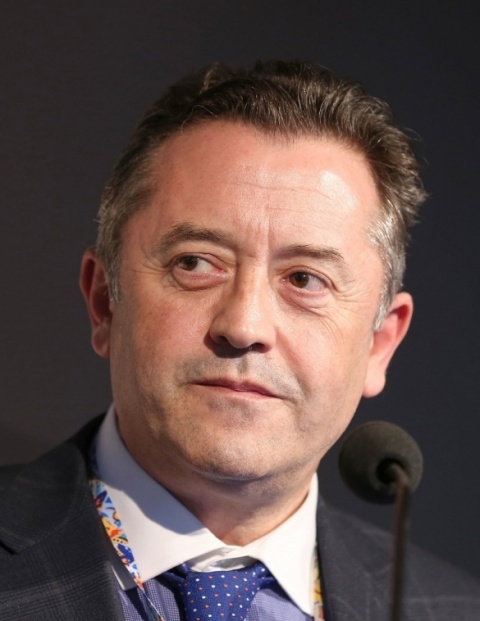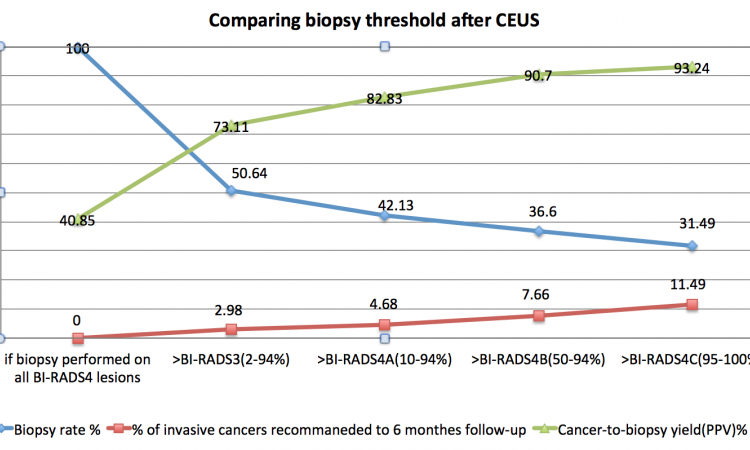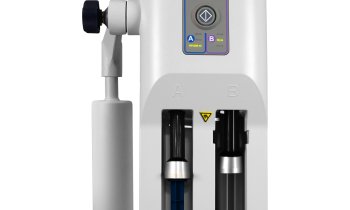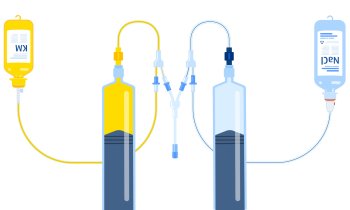Article • Gadolinium-based contrast agents
Clinicians define optimal approach for MRI contrast to maximize benefit
Gadolinium-based contrast agents are an essential component of MRI exams, but are challenged by findings of residual depositions of gadolinium in the body, even though the clinical relevance remains unknown. Three clinicians described how changes to MRI protocols and dose levels for contrast media can optimise the balance between benefit and risk for patients and radiologists.

For magnetic resonance imaging (MRI) examinations the use of gadolinium-based contrast agents (GBCAs) is essential to detect and characterise cancerous tumours and delineate and assess vascular disease. The safety profile of GBCAs has always been considered highly favourable with few relevant contraindications and a lower rate of acute adverse reactions than are seen for iodinated contrast agents used for X-ray based imaging. When an association between GBCAs and nephrogenic systemic fibrosis (NSF) was described in 2006, confidence was shaken, provoking a debate regarding the risk versus the benefit of these compounds. Thanks to well-documented studies and changes to MRI protocols, the debate subsided and, since 2009, no further cases of NSF have been reported. However, debate was re-ignited in 2014 with the first reports of increased signal intensity in the brain after the administration of these agents.
To provide an update for radiologists at the European Congress of Radiology (ECR 2017, in Vienna) on the use of GBCAs and how they can best optimise the balance between risk and benefits, three prominent experts presented insights into the current state of the debate during a satellite symposium hosted by Bracco Imaging. Dr Francesco Sardanelli, Professor of Radiology at the University of Milan, Director of the Department of Radiology at the Research Hospital Policlinico San Donato in Milan, Italy, said: ‘In a context where our knowledge is still limited and confusion and false simplifications make our practice more difficult, we need to continuously re-evaluate the available evidence and to make careful clinical judgment of the profile of each individual patient. The future will be a less standardised approach for gadolinium-based contrast agent usage, an application of personalised medicine to the field of MRI.’

The emergence of findings for NSF came in the context of what Sardanelli compared to a ‘perfect storm’ yet had a positive impact on clinical practice, because it forced radiologists to rethink the value of unenhanced MRI, to better apply technical tools for accurate diagnosis, to screen for renal failure patients as candidates for GBCA injection, and to accurately describe the type and dose of contrast agent for each patient. The current discussion, he said, focuses mainly on gadolinium accumulation in the brain, yet the clinical relevance of the findings remains unknown. At this point, no clinical consequences, and no neurological symptoms have been associated with brain signal increases in patients who were injected with GBCAs. ‘The high impact that this message has is that brain is brain,’ he noted, outlining key points for balancing diagnostic performance with safety. First is to rethink the indications for GBCAs. Where one in three MRI examinations today includes contrast-enhanced scans, a reassessment of the necessity of a GBCA injection, ‘could reduce this rate, but probably it will be difficult to go below one in four’. A second issue is to take into consideration the age and clinical profile of the patient, he said, while radiologists might also rethink the GBCA dose to determine if less is better.
On this point, Dr Luis Martí-Bonmatí, director of medical imaging at La Fe University and Polytechnic University Hospital in Valencia, Spain, discussed the potential for determining an optimal approach in the use of gadolinium contrast agents in order to achieve the maximum benefit. Acknowledging the concerns, he said, ‘It is relevant to recognise the extremely important role that contrast-enhanced MRI studies have in defining the presence and characteristics of so many different diseases and pathologies. The issue then becomes how to strengthen contrast enhancement across most indications that require contrast injection to achieve the highest diagnostic confidence.’ Martí-Bonmatí focused on the contrast agent property known as relaxivity, a measure of the degree to which a given amount of contrast agent shortens the T1- and T2-weighted relaxation times of tissue and how these values can be exploited depending on the clinical need, to increase enhancement or to lower the dose of the agent used. Not all contrast agents based on gadolinium are equal, he noted. Three chelated compounds are categorised as high-risk for NSF, while five others, are classified as medium- or low-risk in Europe. Regarding gadolinium depositions in the brain the current evidence is inconsistent.

In all cases high-risk chelates and double or triple dose administrations are to be avoided, particularly for patients with renal insufficiency. Using lower-risk gadolinium chelates the lowest dose should be administered to obtain the clinical information required. On this point he demonstrated how the selection of an appropriate contrast agent and use of higher field strength can maximise clinical information while minimising the risk for patients. Contrast media with high relaxivity allow the maximum visual enhancement, depiction and characterisation, enable the use of low doses and thereby assure the greatest possible benefit for both the patient and clinician.
Dr Josef Vymazal from Na Homolce Hospital in Prague, Czech Republic, said he is ‘deeply convinced that this is still a work in progress and we should be very careful about conclusions drawn about the topic of gadolinium deposition’. He emphasised that the mechanism by which GBCAs penetrate into the brain is still not understood, and to this point no clinical manifestations have been described in connection with the phenomenon. The unique properties of gadolinium are what have made this metal in a chelated form an essential part of almost all MRI contrast agents, he explained. In an analysis of published and presented works, Vymazal showed that, as yet, there is no data available on the chemical form in which gadolinium is deposited and that work is needed to elaborate this. In addition, the potential contributions of other metals known to reduce T1 and T2 relaxation times and to deposit in deep nuclei of the brain, such as iron, copper and manganese, have not yet been assessed, he said.
Building on these findings, in a study completed just days ahead of the ECR congress, Vymazal opened a path for further clinical investigation on what he called a new concept focused on ‘gadoferritin’ or gadolinium-ferretin complexes, a compound developed at the Institute of Organic Chemistry and Biochemistry in Prague. Signal intensity reported in deep-brain nuclei may be explained by the presence of such gadolinium-ferretin complexes, the study suggests. In the end, he stated, it is possible that the chemical form in which gadolinium complexes are retained in the various brain areas may vary over time, and more than one form may coexist at the same time. In summary, Vymazal noted that while gadolinium deposition in various organs, including brain, bone, skin and liver, has been demonstrated by pathological evidence for all GBCAs, including both linear and macrocyclic agents, at this time there is insufficient evidence to allow conclusions to be drawn concerning the clinical impact of this phenomenon.
16.06.2017











